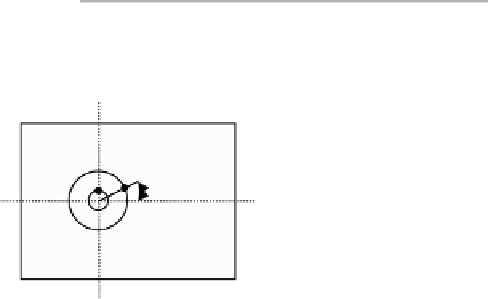Cryptography Reference
In-Depth Information
Based on above definition, an invariant transformation T must satisfy
T (gM)=T (M) , ∀g∈G.
(11.24)
For a given gray-scale image M and an arbitrary complex-valued function
f (M), it is possible to construct an invariant transformation T by using the
Haar integral:
1
G
T [f ](M):=
f (gM)dg
(11.25)
G
N
0
N
1
2π
1
2πN
0
N
1
=
f (g (t
0
,t
1
,φ) M)dφdt
1
dt
0
.
t
0
=0
t
1
=0
φ=0
Because this integral is of linear complexity in the number of pixels and in
the maximum radius of the kernel functions support, we need to reduce the
calculation complexity. For discrete images, because we can choose integers
for (t
0
,t
1
) and use K steps for φ, the following formula can be obtained.
N
0
−1
N
1
−1
K−1
T [f ](M)≈
1
KN
0
N
1
2πk
K
f
g
t
0
,t
1
,φ =
M
.
(11.26)
t
0
=0
t
1
=0
k=0
The calculation strategy can be illustrated by Fig. 11.20. If we select a simple
function
f (M)=
M (0, 1)M (2, 0),
(11.27)
then
N
0
N
1
2π
1
2πN
0
N
1
T [f ](M)=
M (sin φ + t
0
, cos φ + t
1
)
(11.28)
t
0
=0
t
1
=0
φ=0
M (2 sin (φ + π/2) + t
0
, 2cos(φ + π/2) + t
1
)dφdt
1
dt
0
.
t
f
∑
1
⋅
ϕ
t
T
[
f
](
M
)
M
Fig. 11.20.
Calculation strategy for invariant integration in the case of Euclidean
motion.
We can apply the Monte-Carlo method for the calculation of multi-
dimensional integrals as follows:











